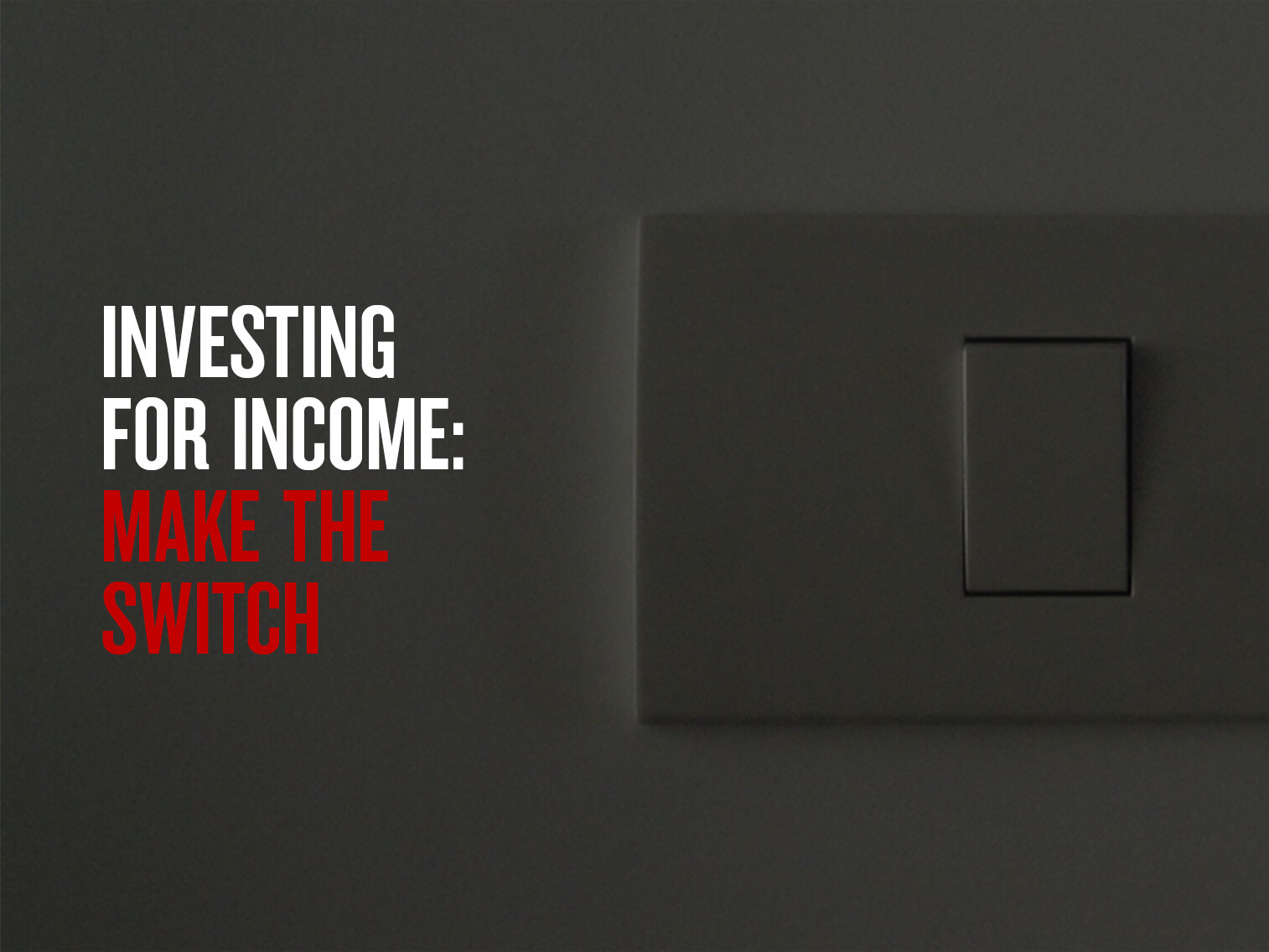Family succession on the back-burner? Delay can create unforeseen complications down the track


Article
Large sums of private wealth are being shifted from term deposits into fixed income in a bid to increase returns. But you want to be sure you’re doing it the right way.

Private wealth manager JBWere is seeing money pouring out of term deposits into fixed income investments like never before. “It’s extraordinary,” says Head of Fixed Income Strategy Laurie Conheady.
Particularly when you consider the state of fixed income right now. “Returns on fixed income are pretty much the lowest they’ve been for many years,” Conheady points out. Yet term deposits are lower still. “People are saying that the [0.5 per cent] rate on term deposits just isn’t cutting it for them.”
Even with $1 million invested, that 0.5 per cent rate translates into just $5,000 a year – and that’s before tax. It’s a long way off the $40,000 to $50,000 it would have generated post-GFC and hardly enough if you’re relying on it to fund your living expenses in retirement, or to beat inflation. “When term deposits were giving you four or five per cent it was okay,” Conheady says. “But when you’re receiving one-tenth of that, you need to look elsewhere.”
While fixed income won’t result in stellar returns either in the current environment, they do offer a return pick-up of sorts as well as diversification and liquidity benefits. It could be 10-year government bonds at 1.48 per cent or hybrids at around the 2.5 per cent mark, representing between $14,800 to $25,000 a year on that $1 million investment of yours.
But looking elsewhere – to other, more complex fixed income assets – takes know-how and forethought, especially if you’re hunting higher returns. As Conheady says, however keen you are to boost your income, it’s critical that you never forget fixed income’s role as a defensive play and shape your portfolio accordingly – preferably with the help of an adviser. After all, higher returns count for little if you lose your capital along the way.

At first glance, fixed income investments may seem straightforward. In fact, they’re considerably more complicated than shares. For starters, they encompass a wider range of instruments with different kinds of maturities and yields.
At the one end, there are the extremely low-risk – and low-return – government or semi-government bonds (those issued by the states and territories). Here, you can choose anywhere between a one- and 25-year bond, all of them paying a different rate of regular interest and offering different levels of yield depending on how long you hold them for.
Then there are the senior bonds of corporates and financials and subordinated debt issued largely by the major banks and insurance companies, again offering a range of yields reflecting their creditworthiness and level of risk.
At the riskier end of the spectrum are hybrids, also issued by the major banks and insurance companies, as well as the occasional corporate. These are complex financial instruments that combine the features of both debt and equity. They may provide income like a bond, but they can also rise or fall in value like a share and, in some circumstances, be converted to equity.

While shares are listed on a stock exchange, most bonds and other fixed income investments are issued in the over-the-counter market. This means they are traded directly between two parties, often making their liquidity and pricing highly opaque. For the individual investor, accessing them can be challenging, as can even knowing what to access.
Certainly, there isn’t a wealth of investor research to turn to for insights. “In the equity market, there are analysts everywhere giving their views and recommendations,” Conheady notes. “You don’t have as much of that on the fixed income side.”
Many of these over-the-counter deals are also beyond the reach of individual investors due to their sheer size. Offerings tend to be sold in parcels of $500,000 at a minimum. While NAB can break these down into more manageable parcel sizes of $50,000 or $100,000, they remain too large for many clients looking to build a well-diversified portfolio of bonds, Conheady says.
For all that, there’s no need to feel too daunted. Done the right way, bonds – and other fixed income investments – can be of huge benefit in your asset allocation, even in a low-yield environment.
To begin with, not all fixed income instruments are issued over the counter. “If you go on the ASX, you can buy around 35 different hybrids,” Conheady says. “Listed on the ASX also are exchange traded funds (ETFs) and government bonds.” That means a far more affordable minimum investment amount, typically around the $100 mark.
You can also choose to invest in a managed fund dedicated to bonds. Again, the minimum investment amount is smaller– although your choice is too.
Whatever you decide, it’s vital you manage your risk and preserve your capital by diversifying your investment options as much as possible.
As Conheady notes, it would be very rare for one of the bigger portfolio managers to have fewer than 100 exposures, or assets, in their portfolios. That way, they only lose less than one per cent of their entire portfolio if a corporate goes bankrupt and they can’t get your money back.

Diversification is not just about the number of investments you hold; it’s also about their characteristics.
JBWere’s fixed income team suggests diversifying across a range of instruments, including government bonds, senior corporate bonds, subordinated bonds and even hybrids. It’s also wise to invest in a variety of sectors, whether that’s financials, infrastructure or other corporates.
You also want to ensure your investments are of different maturities as well, with, for example, bonds that may last either three, five or 10 years. “You want to have a staggered maturity profile so you don’t have large parts of your portfolio maturing at the same time,” Conheady explains. “Otherwise, you increase your reinvestment risk by having to roll a number of exposures all at once.”
This advice relates as much to the international arena as the domestic fixed income space. Including both in your portfolio is important if you want to access a wide range of opportunities.
When it comes to international investments, however, you also need to consider turning to a variety of managers who are experts in their area. This is what JBWere does. “[Our Melbourne-based team] can’t be fully across what’s happening in Europe or the US, so we outsource that [aspect] to managers [who are global experts],” Conheady says. However, first they undergo a rigorous assessment process, where JBWere’s Managed Funds team ensure they meet the wealth manager’s key 10-point evaluation criteria.
Importantly, JBWere doesn’t recommend one particular manager. “We have a series of managers and each of them has multiple exposures in their portfolios across different sectors, countries, regulatory jurisdictions, issuers… you name it,” Conheady says. Again, however, you could include direct investments, managed funds or ETFs in the international part of your portfolio.
In fact, it’s a very good idea to divide your portfolio between active and passive managers – that is, between fund managers who research and select each investment and the likes of ETFs that simply track a particular index. There’s a growing tendency to favour ETFs, but again it’s a matter of not putting all your eggs in one basket. “If you had a complete fixed income exposure through ETFs, literally you take whatever the market does,” Conheady warns. “So, if the market sells off dramatically, you just have to wear whatever the impact is.”
Also keep in mind that interest rates won’t stay low forever – and there’s reason to believe they will rise sooner rather than later. This means you need to protect your fixed income portfolio against inflation.
Here, JBWere suggests a mix of fixed and floating rate exposures – that is, some investments where the interest rate stays the same and some where it moves with the markets. This limits the negative impact on your portfolio’s capital value when interest rates finally do rise.
“Depending on the individual client’s circumstances, we might have more fixed or more floating, but your starting point is a 50/50 split,” Conheady says.
These strategies are how JBWere builds bespoke fixed income portfolios for its clients – while shaping them to the individual’s needs and objectives.
Underlying its approach is the fundamental precept: preserve the client’s capital at all costs. “Our philosophy, first and foremost, is that capital preservation is paramount,” Conheady says. “You cannot afford to lose anything [when it comes to] fixed income, so credit quality is the driving force behind everything we do.”
This is particularly relevant in the current environment where investors are intent on upping their returns. When it comes to any investment, Conheady suggests asking yourself the question: ‘Does it compensate me for the risk I’m taking on?’ If it doesn’t, it’s not worth it.
“Some [assets] might give you a relatively attractive return of three or four per cent, but the risks you are taking on may be equity-like in nature and, in that circumstance, we’d rather you just go and buy the equity,” Conheady says. “Because [at least] you might get some uplift in return.”
This doesn’t mean investors have to give up on higher fixed income returns. It’s simply another reason to ensure you diversify. “Your portfolio can afford to take on a little bit more risk if you’re not concentrated and you have greater diversity,” Conheady points out.
Ultimately, it’s a matter of balance. As Conheady says: “The challenge for us is to find those instruments where we’re happy with the credit quality, happy with the instrument structure, happy with the return, and then construct a portfolio that makes sense for the client.”
© National Australia Bank Limited. ABN 12 004 044 937 AFSL and Australian Credit Licence 230686.